12 Ways to Protect Your Garden from Extreme Heat and Dryness
When the summer heat hits, your garden can quickly suffer from the harsh conditions of dryness and high temperatures. Fortunately, there are several practical ways to help your plants thrive, even in the most extreme weather. From choosing the right plants to implementing water-saving techniques, these simple strategies can keep your garden healthy and flourishing all season long. By following these easy tips, you can protect your plants from the damaging effects of heat and ensure they have the resources they need to grow strong.
This post may contain affiliate links, which helps keep this content free. Please read our disclosure for more info.
Mulch Around Plants
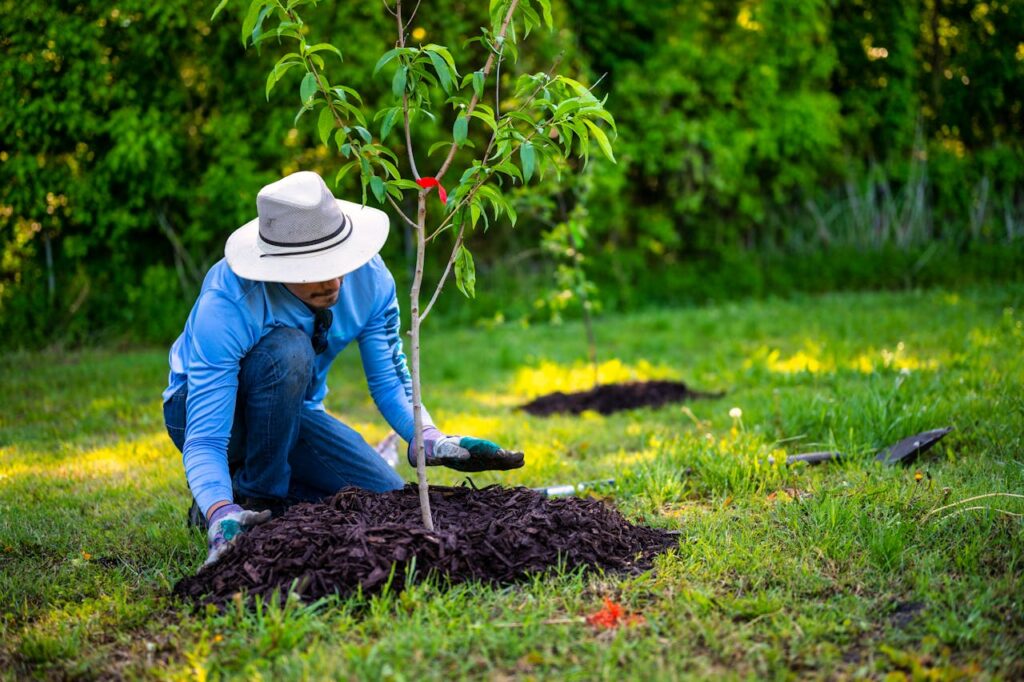
Mulch is one of the most effective ways to protect your garden from extreme heat and dryness. By covering the soil with a thick layer of mulch, you help retain moisture, keeping the soil cool and reducing evaporation. Organic mulches like straw, wood chips, or leaves not only act as a protective layer but also decompose over time, adding valuable nutrients to the soil. This creates a more sustainable environment for your plants, especially during long, hot spells.
In addition to moisture retention, mulch helps prevent the soil from compacting, which can impede water absorption. It also helps regulate the soil temperature, keeping it cooler during the day and warmer during the night. By reducing weed growth, mulch ensures that your plants have less competition for water, allowing them to thrive even in difficult conditions.
Deep Watering
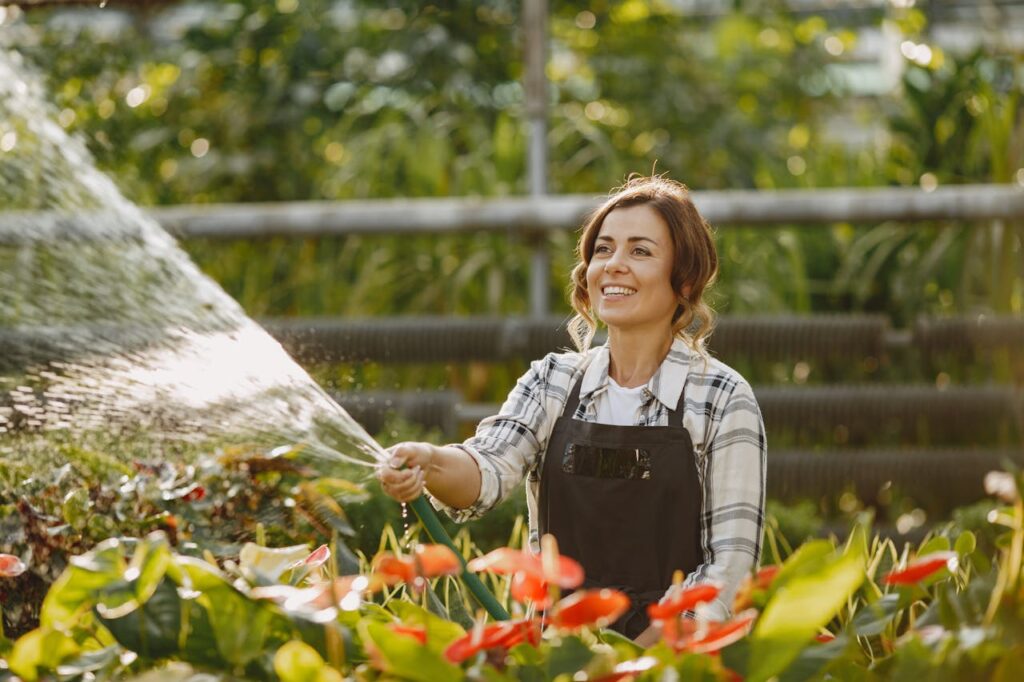
Deep watering encourages plants to establish strong, deep root systems, which are essential for surviving extreme heat and dry conditions. When water is applied deeply, it reaches the plant’s roots more effectively, allowing them to access moisture deeper in the soil. This is particularly beneficial for plants that require consistent moisture but cannot survive frequent, shallow watering, which often encourages shallow roots.
Watering deeply also helps reduce the risk of overwatering, which can lead to root rot. It’s best to water early in the morning or late in the evening when temperatures are cooler, as this minimizes water loss due to evaporation. By allowing the soil to dry slightly between waterings, you encourage the plants to grow roots deeper into the ground, where they are less affected by surface-level heat and dryness.
Provide Shade
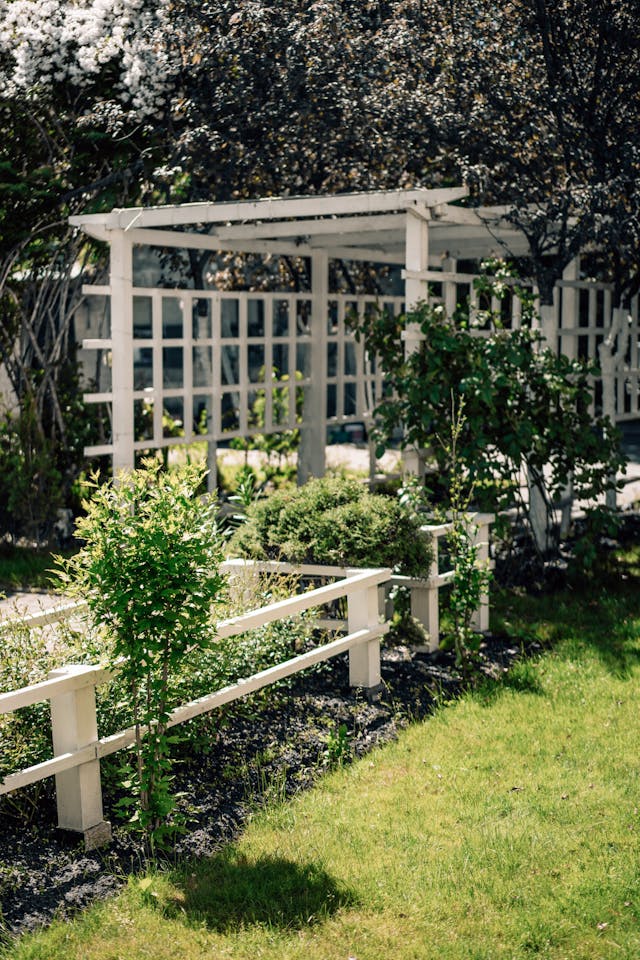
Providing shade for your garden can help reduce the impact of extreme heat on your plants. Shade cloths or garden structures like pergolas can shield delicate plants from the intense midday sun. Even just planting taller, heat-tolerant species around your garden can provide natural shade to more vulnerable plants, reducing their exposure to the harsh sun.
Shade does more than protect plants from sunburn; it also helps to lower the surrounding temperature in your garden, creating a cooler microclimate. This makes it easier for your plants to thrive by maintaining a more stable environment, particularly during the hottest parts of the day. Whether using physical shade or planting strategically, reducing exposure to direct sunlight can make a significant difference in how well your garden fares during heat waves.
Select Heat-Tolerant Plants
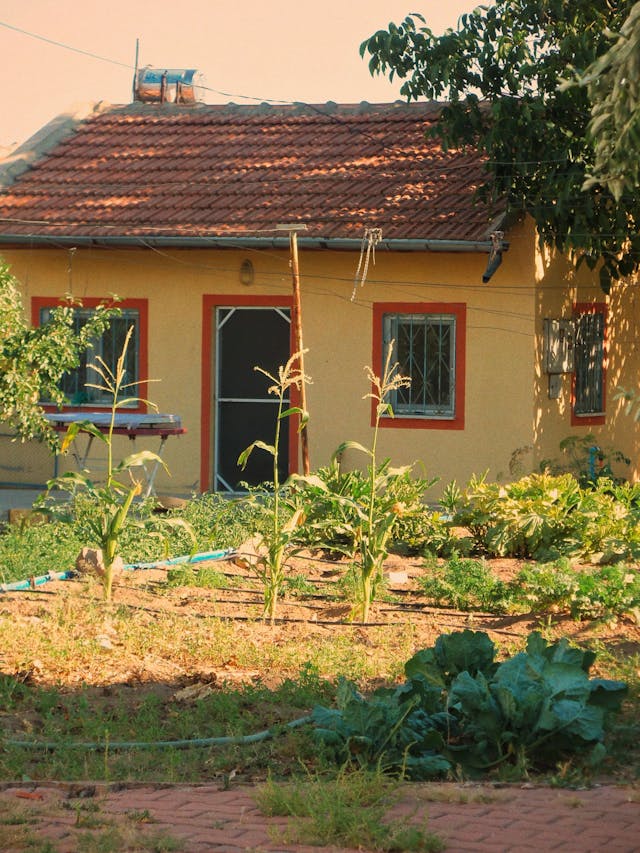
Selecting the right plants for your garden is essential when dealing with extreme heat and dryness. Some plants are naturally more resistant to hot conditions and can handle less water, making them perfect for hot climates. Succulents like aloe vera or agave, as well as drought-resistant varieties like lavender and rosemary, thrive in dry conditions and require minimal attention during heat waves.
Incorporating native plants into your garden is another great way to ensure heat resilience. These plants have adapted to local environmental conditions, making them naturally suited to handle extreme temperatures and periods of dryness. By selecting heat-tolerant plants, you not only reduce your garden’s water requirements but also create a low-maintenance landscape that flourishes despite the harsh conditions.
Water in the Early Morning or Late Evening

Watering at the right time of day can make a big difference in how efficiently your garden absorbs moisture. Early morning and late evening are the best times to water because temperatures are cooler, and evaporation rates are lower. Watering during the heat of the day causes much of the water to evaporate before it reaches the roots, which wastes valuable resources and can stress your plants.
In the early morning, the soil is still cool from the night, which allows the water to seep in gradually, giving the plants a steady supply of moisture throughout the day. Late evening watering ensures that the plants have enough moisture to get through the night. By timing your watering properly, you help your plants thrive while conserving water during extreme heat and dry periods.
Use Irrigation Systems
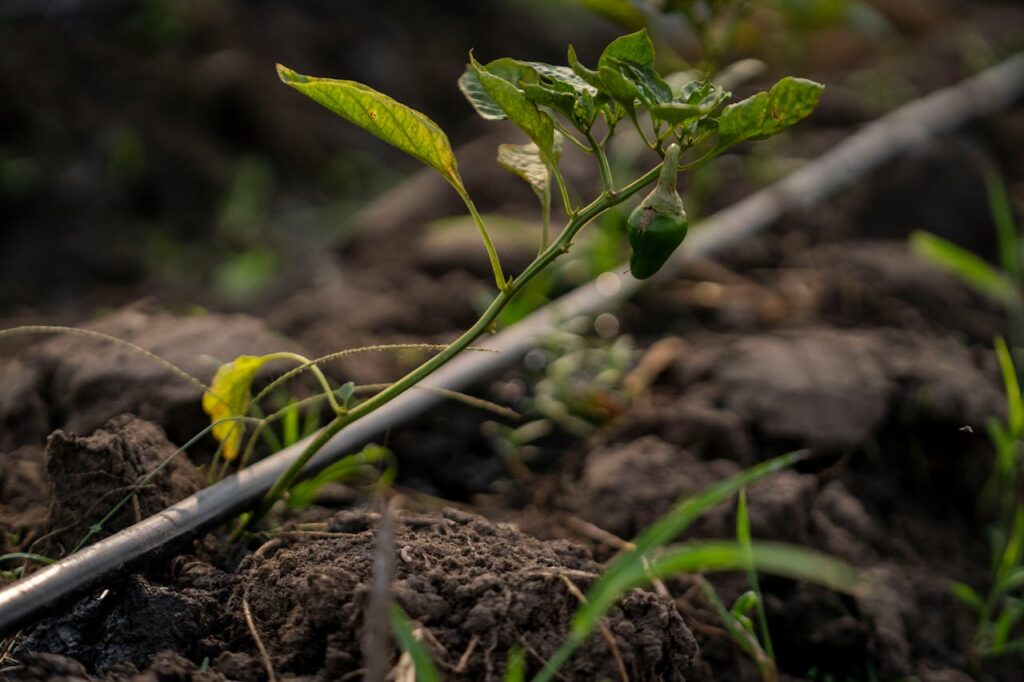
Installing an irrigation system is one of the most efficient ways to manage water use in your garden. Drip irrigation systems or soaker hoses are ideal because they deliver water directly to the plant’s root zone, where it’s needed most. This targeted watering approach ensures that water doesn’t evaporate before it reaches the roots, and it also reduces the amount of water lost to runoff.
Automated systems can be set up to water your garden during the early morning or late evening, making them an excellent option for ensuring consistent watering without wasting water. Additionally, an irrigation system can be customized to meet the needs of specific plants, making it a great solution for diverse gardens with varying water requirements. By investing in an efficient irrigation system, you can keep your garden healthy and hydrated even during long periods of extreme heat.
Group Plants with Similar Watering Needs
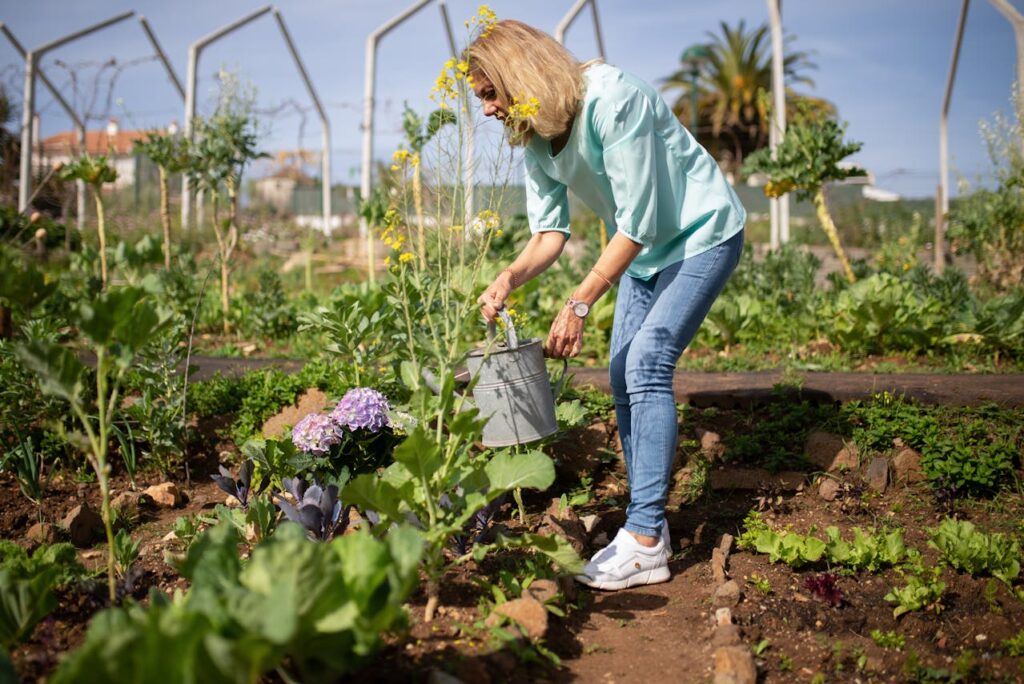
Grouping plants with similar water requirements together is an excellent way to optimize watering and reduce water waste. Plants that need more water should be placed in one area of the garden, while drought-tolerant plants should be spaced in areas where water can be conserved more easily. This approach minimizes the risk of overwatering or underwatering different plants, ensuring that each gets the appropriate amount of moisture.
By grouping plants with similar needs, you can tailor your watering efforts to each section of the garden, helping to conserve water during dry periods. This method also makes it easier to monitor the health of your plants since you will be aware of any plants that might need more or less water based on their grouping. The practice of grouping plants based on their water needs can improve the overall health and efficiency of your garden.
Create Windbreaks

Windbreaks are important for protecting your garden from the drying effects of wind, which can quickly deplete moisture from the soil and plants. Planting hedges, tall shrubs, or even installing fences around your garden can reduce the speed and force of the wind, creating a more stable environment for your plants. This protection is especially beneficial during heat waves, where the combined effects of heat and wind can lead to rapid soil moisture loss.
In addition to moisture retention, windbreaks can also provide shade to certain plants, creating a cooler microclimate. By reducing wind exposure, your plants will have a better chance of thriving, as the conditions will be less harsh. Whether natural or man-made, windbreaks are an effective strategy for protecting your garden from the damaging effects of extreme heat and dryness.
Add Organic Matter to Soil

Incorporating organic matter, such as compost or well-rotted manure, into your garden soil can significantly improve its water retention capacity. Organic matter enhances the structure of the soil, allowing it to retain more moisture while providing better drainage. This helps prevent the soil from drying out too quickly and ensures that water is available to the plants over a longer period.
Organic matter also improves soil fertility, providing essential nutrients that your plants need to grow strong and healthy. By regularly adding compost or other organic materials, you improve the overall health of your garden, making it more resilient to extreme heat and dry conditions. This simple yet effective technique promotes healthier plants and reduces the need for frequent watering during hot spells.
Use Shade Tents or Temporary Structures
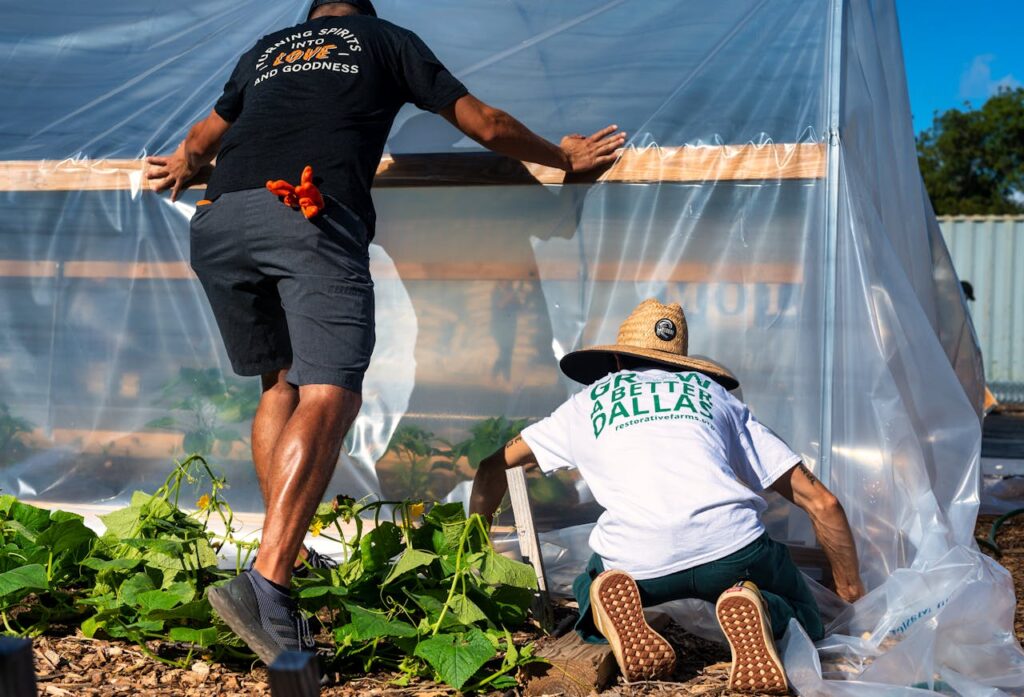
If your garden doesn’t have enough natural shade, consider using temporary structures like shade tents or garden canopies. These can be placed over plants that are particularly sensitive to heat or sunburn. Shade tents are easy to set up and move, making them a flexible option for protecting vulnerable plants during the hottest parts of the day.
Temporary structures can help create a cooler environment, ensuring that your plants do not suffer from intense sun exposure. They are particularly useful for young plants or newly transplanted seedlings that are more susceptible to damage from extreme temperatures. With a shade tent, you can protect your plants during extreme heat waves without committing to permanent shade structures.
Consider Raised Garden Beds
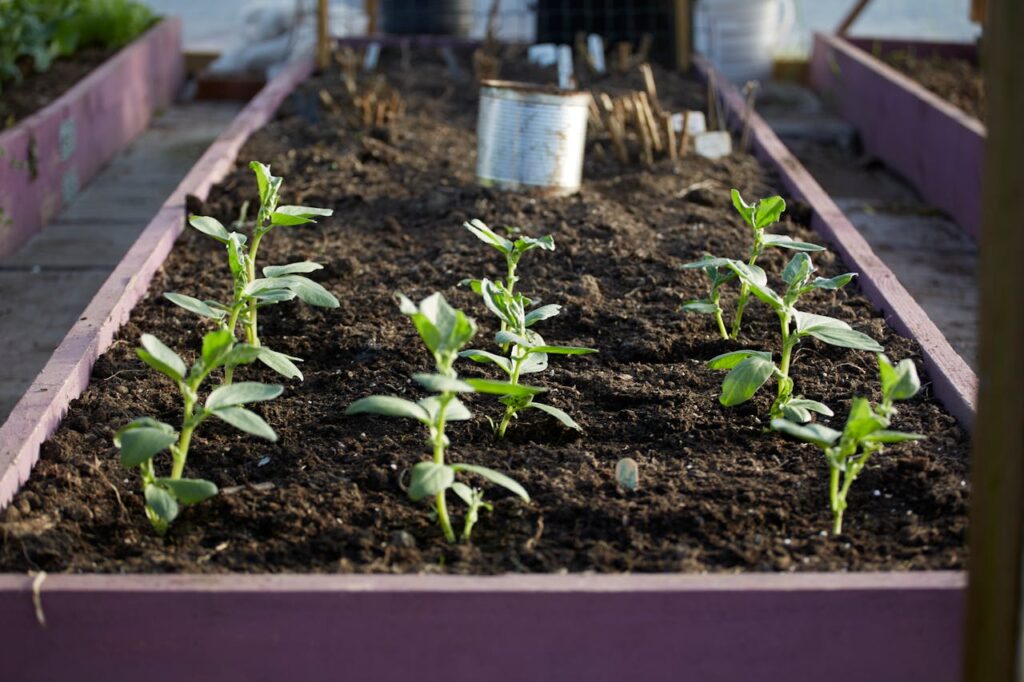
Raised garden beds are an excellent solution for gardens that experience extreme heat and dryness. The soil in raised beds tends to warm up faster in the spring and cool down more quickly in the fall, making it easier to manage the temperature. Additionally, raised beds can be filled with high-quality soil that retains moisture better than ground-level soil, reducing the need for frequent watering.
Raised beds also improve drainage, which can help prevent waterlogging during heavy rains, and they reduce soil compaction. By adding organic matter to the raised bed, you further enhance its ability to retain moisture, making it a perfect solution for growing plants in regions with extreme heat. This method can increase plant growth and survival, especially in areas with difficult growing conditions.
Plant Cover Crops

Planting cover crops, such as clover or alfalfa, in between your garden plants can provide several benefits during hot, dry weather. These crops help prevent soil erosion, improve soil structure, and reduce evaporation by shading the soil. As the cover crops grow, they act as a protective blanket for the garden, allowing your main crops to retain moisture and stay cooler.
Cover crops also add nutrients to the soil through the process of nitrogen fixation, which can benefit the plants that you are growing. Once the growing season is over, you can till these crops into the soil to further enrich the soil. This practice not only helps with moisture retention but also improves the long-term health of your garden.
This article originally appeared on Avocadu.
